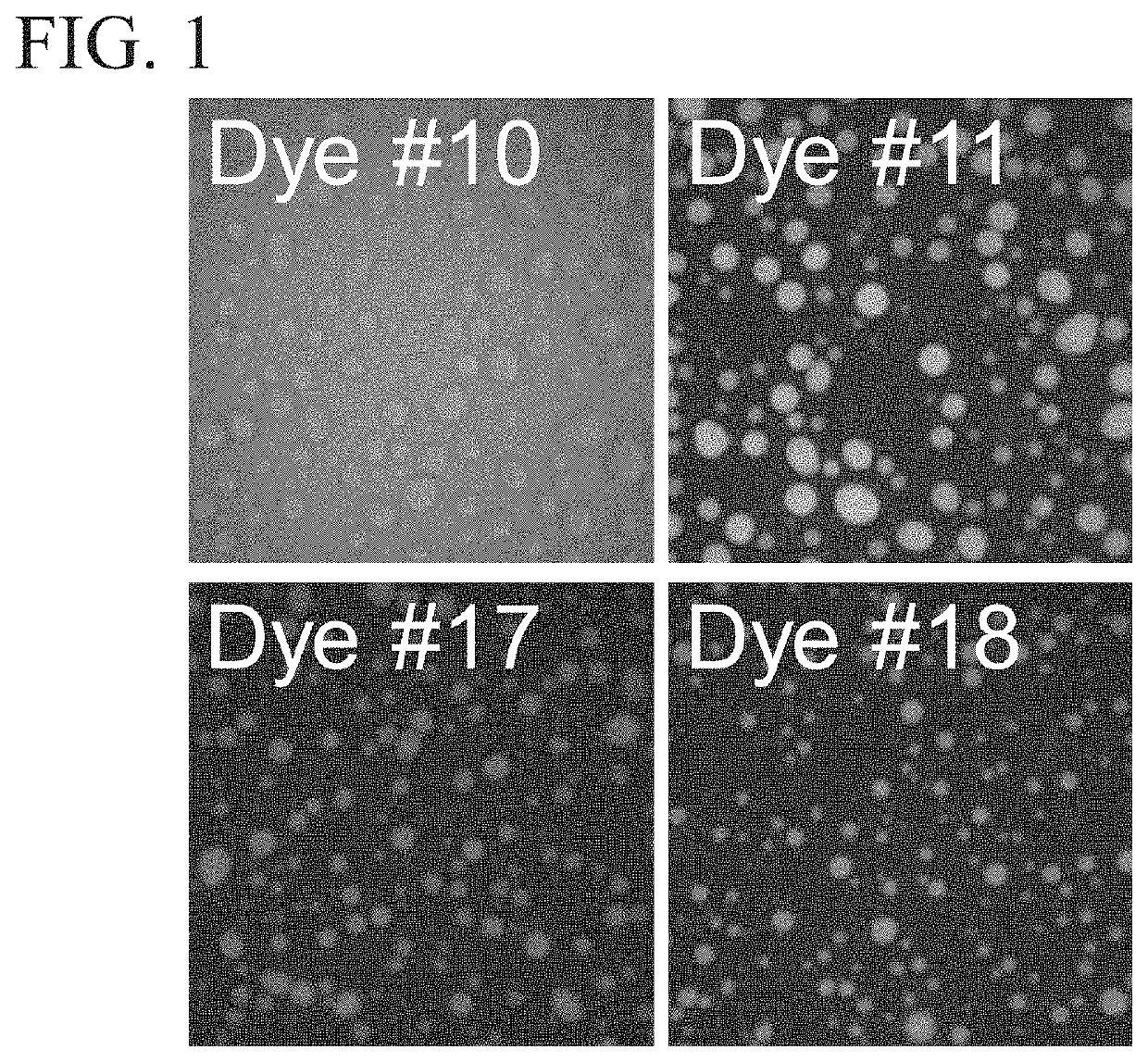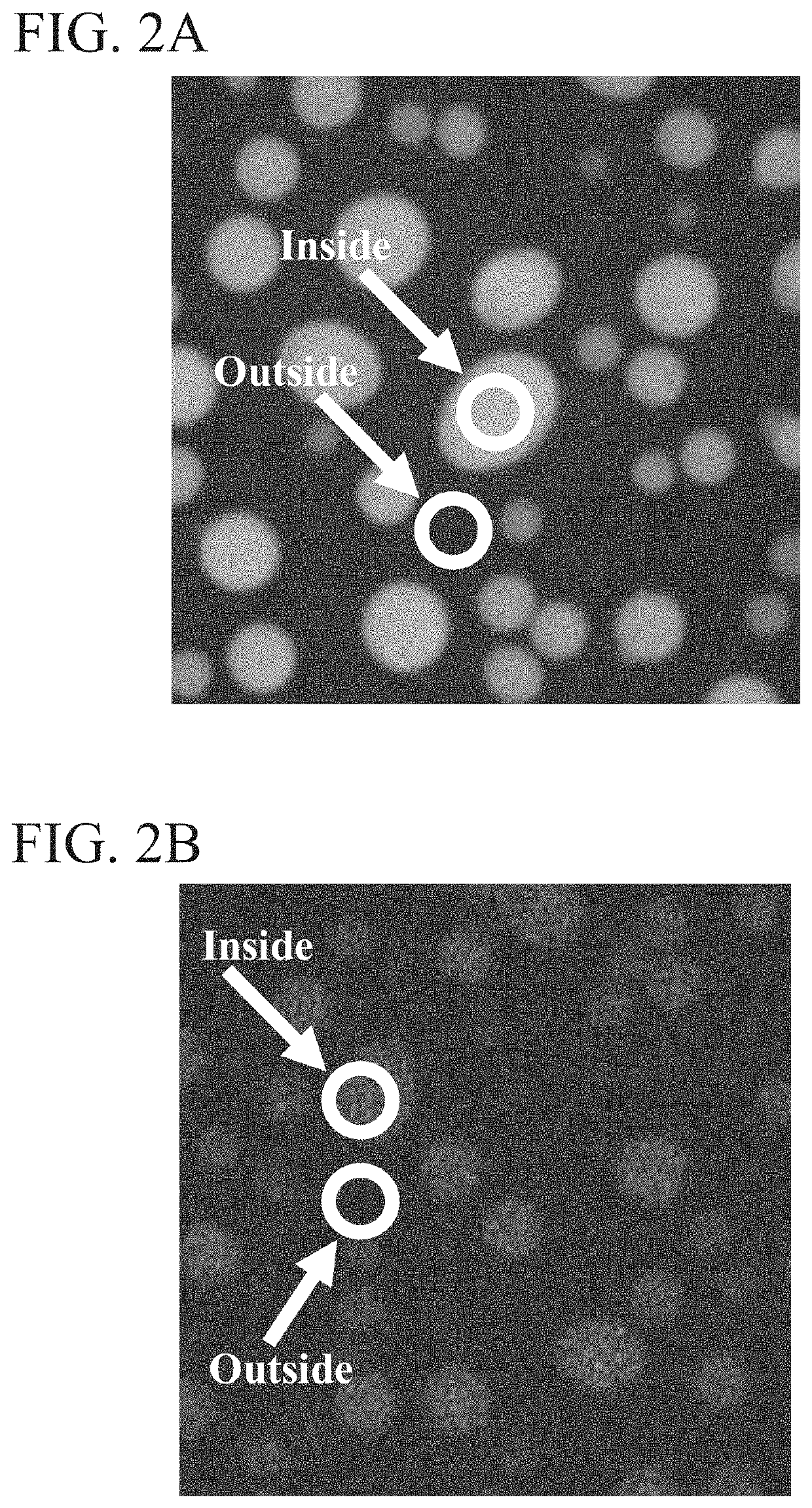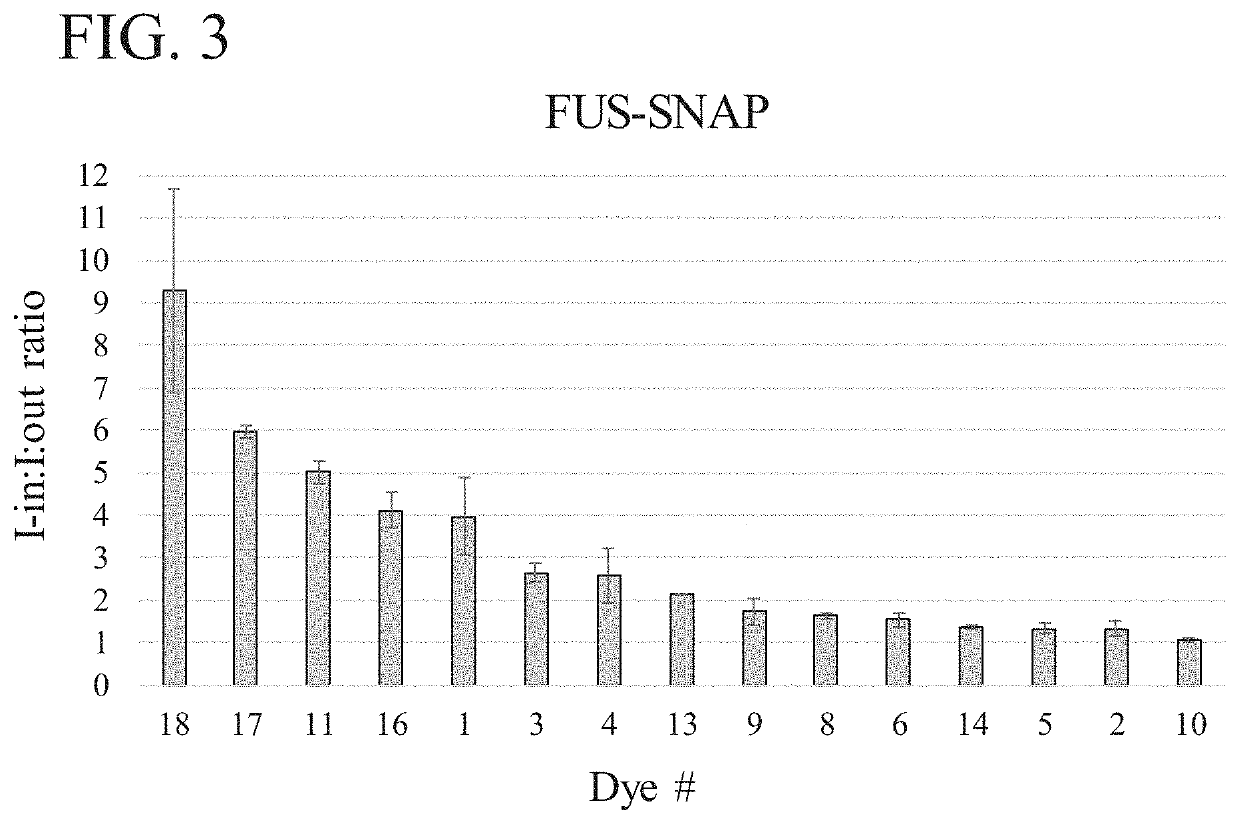Methods of characterizing condensate-associated characteristics of compounds and uses thereof
a technology of condensate and associated characteristics, applied in the field of biological condensates, can solve the problems of little or nothing known about the mechanism governing the partitioning of compounds into groups, and little or nothing known regarding the identification of test compounds
- Summary
- Abstract
- Description
- Claims
- Application Information
AI Technical Summary
Benefits of technology
Problems solved by technology
Method used
Image
Examples
example 1
Characterization of One or More Compounds in Solution-Based Condensates
[0350]Condensates are formed in a solution. For example, a solution comprising a high concentration of salt and a high concentration of one or more protein capable of forming a condensate are diluted into a buffer that mimics physiological salt conditions.
[0351]Alternatively, a solution comprising one or more proteins capable of forming a condensate is diluted into a buffer and a crowding agent is added. In one specific embodiment, proteins capable of forming a condensate are mixed with 10% Dextran in a buffer containing 25 mM Tris-HCl (pH 7.4), 150 mM KCl, 2.5% glycerol, and 0.5 mM DTT.
[0352]A test compound is added to the solution before or after condensate formation. When added after condensate formation, the solution is incubated to allow partitioning of the test compound.
[0353]The density of condensates is typically greater than the surrounding solution, so the condensate is allowed to sediment. In some inst...
example 2
Characterization of Dye Compounds in Solution-Based FUS and PGL-3 Condensates
[0356]A variety of exemplary test compounds were assayed using exemplary methods to determine partition characteristics, relative partition characteristics, and condensate preference profiles. For this example, the exemplary test compounds used were dyes; however test compounds are not limited to dyes. The entire procedure was performed twice in two independent experiments on different days and in different orders.
[0357]All dye-stocks were stored as 1 mM solutions in 100% DMSO. The dyes used are shown in Table 1. The dyes were dissolved in dilution buffer (DB: 14.7 mM Tris, pH 7.25, 1 mM DTT) to yield 11.765 μM dye in 1.1765 DMSO. 17 μl of dye was distributed in a 384 well non-binding plate (Greiner).
TABLE 1Assayed dyes.DYE#NAMESTRUCTURECHANNEL 1DAPI405 27-Hydroxy-4- (trifluoromethyl) coumarin405 3Coumarin 343405 4Coumarin 334488 5Fluorescein mono-(N- acetyl-β-D- galactosaminide)488 6Fluor...
example 3
[0364]Co-Localization of Partitioned Compounds and FUS in FUS Condensates
[0365]To confirm that compounds that were partitioned into condensates in Example 2 were partitioned into condensates that contain FUS, Dye #18 (Rhodamine 800), which had an average I-in:I-out ratio of 9.3, was further assessed.
[0366]FUS-GFP condensates were prepared as described for FUS-SNAP in Example 2 using Dye 18.
Imaging
[0367]A spinning disk confocal microscope was used to acquire images of the samples. A 60× oil high-NA objective lens was used to capture the condensate droplets. The laser power was set to 20% and the exposure times were adjusted to the fluorescence emission intensity specific for each dye. Exposure times ranged from 1-1000 ms. Appropriate filter settings were used, matching the excitation and emission spectra of the dye and GFP. Control images were taken of condensates containing FUS-GFP with no dye.
Results
[0368]The resulting images are shown in FIG. 6. GFP-labeled FUS w...
PUM
| Property | Measurement | Unit |
|---|---|---|
| molecular weight | aaaaa | aaaaa |
| molecular weight | aaaaa | aaaaa |
| pH | aaaaa | aaaaa |
Abstract
Description
Claims
Application Information
 Login to View More
Login to View More - R&D
- Intellectual Property
- Life Sciences
- Materials
- Tech Scout
- Unparalleled Data Quality
- Higher Quality Content
- 60% Fewer Hallucinations
Browse by: Latest US Patents, China's latest patents, Technical Efficacy Thesaurus, Application Domain, Technology Topic, Popular Technical Reports.
© 2025 PatSnap. All rights reserved.Legal|Privacy policy|Modern Slavery Act Transparency Statement|Sitemap|About US| Contact US: help@patsnap.com



